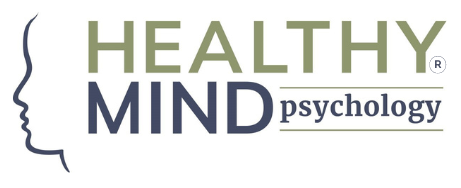Gulp … it’s time to have the conversation.
It’s time to talk to your chronic pain patient about going down the psychology route.
I know that this can be a tricky conversation to have, and I know that it is not a suggestion that is always met with enthusiasm. At worst, some hear it as just another professional saying, “it’s all in your head.”
Yes, another professional making them feel blamed or shamed.
I know – because I’ve had this same conversation myself hundreds of times with patients who are referred to me for psychological services. I’m well versed in explaining the role that psychology plays in dealing with chronic pain, as well as offering patients reassurance and support on their unique journeys … but that doesn’t mean the conversation is always easy. In this article I’ll share some of the insights I’ve gained over time with you so that when you’re headed into your next pain psychology conversation, you can feel a bit more prepared.
Why does psychology need to get involved in pain?
First and foremost, why does psychology need to get involved at all when it comes to chronic pain management? It’s in the body, right? So why is everyone talking about psychology?
From a really early age, we are taught that pain must mean we’ve hurt or damaged something. As kids, we fall over, or get a cut, or a scrape, and it hurts … and then it gets better.
That’s what we’ve learnt about pain and that’s likely what your patients’ expectations will have been around recovery when first injured or beginning to explore their pain symptoms. When you’re supporting a patient through an acute pain issue, this makes a lot of sense and it is often the case that we can expect a clear trajectory of getting better with the right medication, rehabilitation, rest, or strategies to assist.
But, when it comes to chronic pain, this might not always be the case, and this is where the definition of ‘pain’ – and your patient’s understanding of what it means – is so important.
“Real or perceived damage or injury” is the terminology used in the international definition of pain, and these words can make a big difference in us understanding what’s going on inside of our body. The idea that we don’t have to have a mechanical issue, tissue damage, or break of the skin or the bone in order to actually feel pain challenges us to think about, and define, pain in a very different way. When our patients find themselves caught in the misconception that pain equals physical damage, yet their medical journey has struggled to find a purely medical explanation for their recovery trajectory, they can find themselves chasing an explanation for their pain experience. This chase may mean many doctors visits, many invasive exploratory treatments, many surgeries, and feelings of being turned away again and again by people saying, “good news, nothing is wrong!”
“Somebody must have missed something,” they think when their pain doesn’t follow that expected route of slowly getting better. They seek more answers, more testing and more medical intervention. Furthermore, it’s not true that nothing is wrong, because they are definitely feeling the significant disruption of their lifestyle, work, and relationships owing to persistent symptoms that just won’t go. The emotional toll of this journey, and the frustration with feeling disbelieved or unheard, can create many more struggles than simply the pain itself.
As professionals, we know that there is a whole different way that pain can be viewed – one with more answers and further treatment options that sits just outside the traditional medical model of pain and takes a holistic approach to understanding and dealing with chronic pain: the biopsychosocial model …
The biopsychosocial model of pain
The biopsychosocial model of pain takes into account things across your patients’ life systems that could be exacerbating or influencing those pain signals, exploring the complex interactions between biological, psychological and social factors.
There are so many different elements that can contribute to the pain experience – simply beyond there being mechanical damage which you are likely to have explored in depth already. These factors can influence your patients’ perception of pain and the way that the brain interprets the signals it’s receiving from the body. That doesn’t mean that there aren’t biological, mechanical, or even clear physiological reasons for your body experiencing pain as it does. It just means that it isn’t the sole explanation, and even with physical or structural damage, there will still be additional factors that affect the particular experience that that person has with their symptoms and recovery journey.
When it comes to pain management, our thoughts and personal experiences MATTER.
There is a clear relationship between distressing emotions, hopelessness, frustration, invalidation and increased sensitivity to pain signals. Emotions are a communication tool, the body’s way of letting the brain know that something isn’t right. If your patient is experiencing negative emotions and feeling stressed with all that’s going on in their life trying to manage ongoing pain, their body might be hyper ‘in tune’ to what’s going on inside and so the pain signals they’re receiving are amplified. They might find themselves in a feedback cycle, as the emotional response to pain signals makes everything feel worse.
Additionally, the brain is a predictive machine, using our past experiences to help us make sense of what our body needs to do or how to respond to things it encounters moving forwards. When in pain, the brain may predict that more and more things could be responsible for inciting or exacerbating pain. The more the brain feels the body is in danger, or it expects certain activities, encounters, or behaviours to possibly cause harm, the more it’ll interpret signals in the body as warning signs of possible harm- ie, it sends pain signals. We then might see a very reasonable avoidance cycle that’s very common in chronic pain conditions, but this cycle results in clients doing their best to manage their pain, yet finding themselves increasingly isolated, deconditioned, depressed, and in more and more pain.
What might your patients’ reservations be heading into these conversations about psychology and pain?
In my experience, it’s very common for patients to feel nervous about going down the psychology route when thinking about their pain. This is often rooted in stigma around the idea that pain is ‘made up’, and it comes with a lot of feelings about being disbelieved or blamed. As psychologists, this is NOT what we would say at all. We know that your patients’ experiences of pain are very, very real and that, unfortunately, there just isn’t a quick solution when it comes to making that feel better.
When explaining the role of psychology in chronic pain, it’s important that patients know that when we say there is a link between emotional distress and heightened sensitivity to pain, this does NOT mean that the pain they experience isn’t real. But it can be helpful for your patients to observe whether or not their pain experience is increased when they are feeling down, or stressed, or tired, or if they can track activities, interactions, or thoughts that make a difference in turning those pain signals up or down, even a little. When we can start helping someone see that there are some ways to have some limited control over their pain experience, we can start to offer them something essential for recovery- hope.
The biopsychosocial model of pain is not intended to take away from the very real physical experience of pain either. Whilst thoughts matter, this is not to say that, for your patients, the pain is ‘all in their head’. Instead, it is about taking a holistic view of pain and considering all the factors that can influence an individual’s pain experience, as well as how small changes can be made to these factors to better manage or to reduce that pain.
Knowing what to say: how can you reassure your patients?
There isn’t a quick solution when it comes to dealing with chronic pain.
But there are pathways forward.
There are ways to move forwards and to adapt to a higher quality of life for your patients as they learn to manage their pain and potentially get to a point where pain signals are reduced. What’s required is an understanding that our body does not work in isolation – it is part of a greater system in which our brain is doing everything it can to interpret what’s going on in our body and around us to keep us safe, including:
→ Helping us to understand when threats are around
→ Giving us lots of detail about what those potential threats might be
→ Keeping an eye on what’s going on for us internally so that we can feel more empowered to be able to survive
Here are some key takeaways to reassure your patients:
- We know that your experience of pain is very real. This journey is about finding holistic solutions – not about quick fixes that don’t seem to exist.
- We know that you’re doing so much already, whilst experiencing exhaustion and pain. We’re here to support you, not to add so much more to your plate.
- This is not an overhaul of your life. We’ll start small, making little adaptations to change one thing at a time, based around what’s most important to you and what shows promise of helping.
- We’ll find solutions that are most relevant or important to your life – that’s where we’ll begin.
- This is about empowerment and individuality … let’s find some new ways to begin a treatment plan that’s special and specific to you.
Our patients need to feel heard, believed and supported to find the right solutions for dealing with chronic pain. Solutions that are holistic, adaptable, individualised and relevant.
If you work with patients who are living with chronic pain or other chronic stress conditions, Healthy Mind Psychology offers guidance and strategies to empower individuals to manage their response to pain or other symptoms, whether that’s the signal itself or all the implications these symptoms have on one’s overall quality of life – please visit our pain management page to understand our approach to this service.
You can reach out for more support and advice in managing these difficult conversations by contacting us below:

